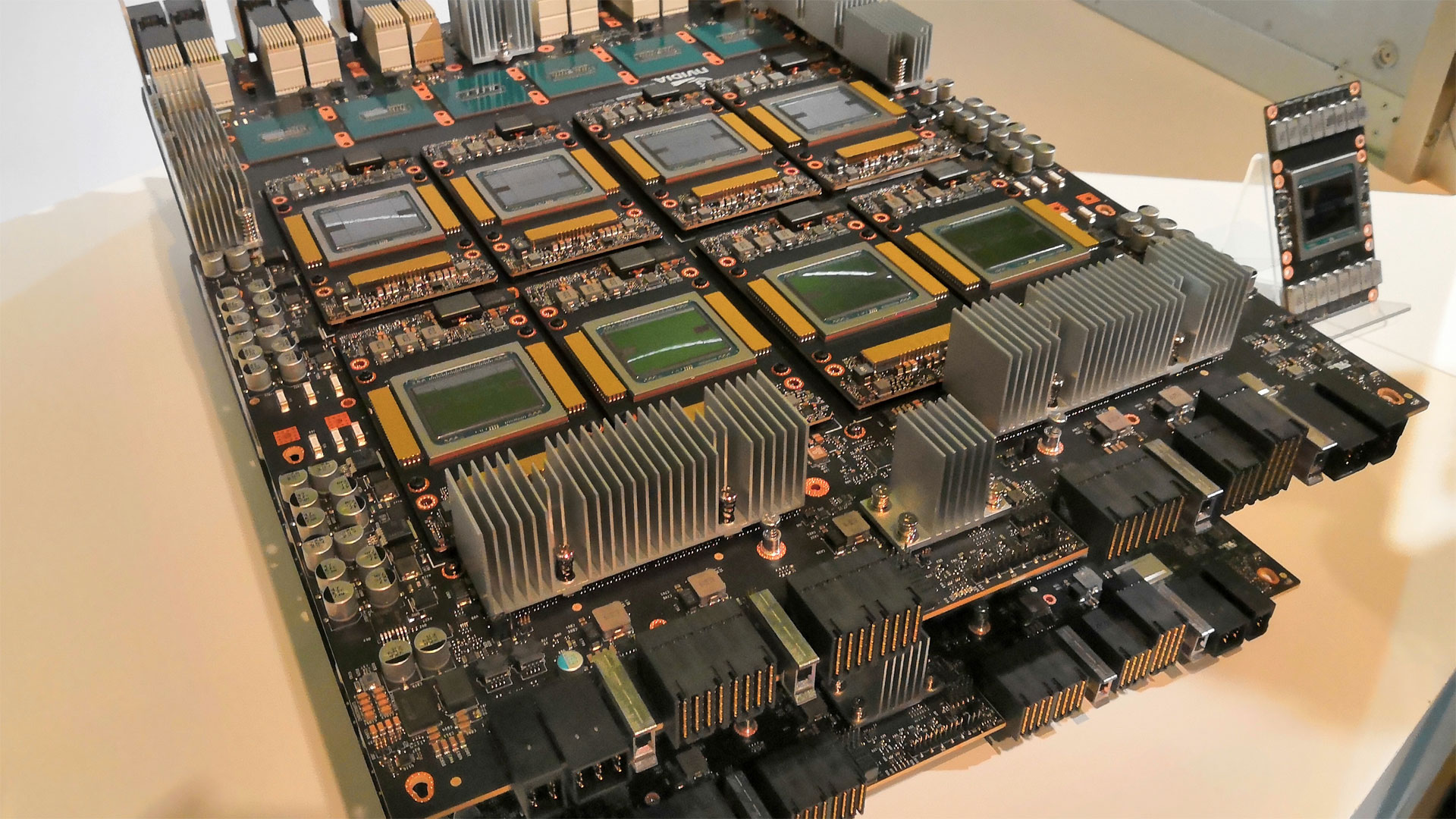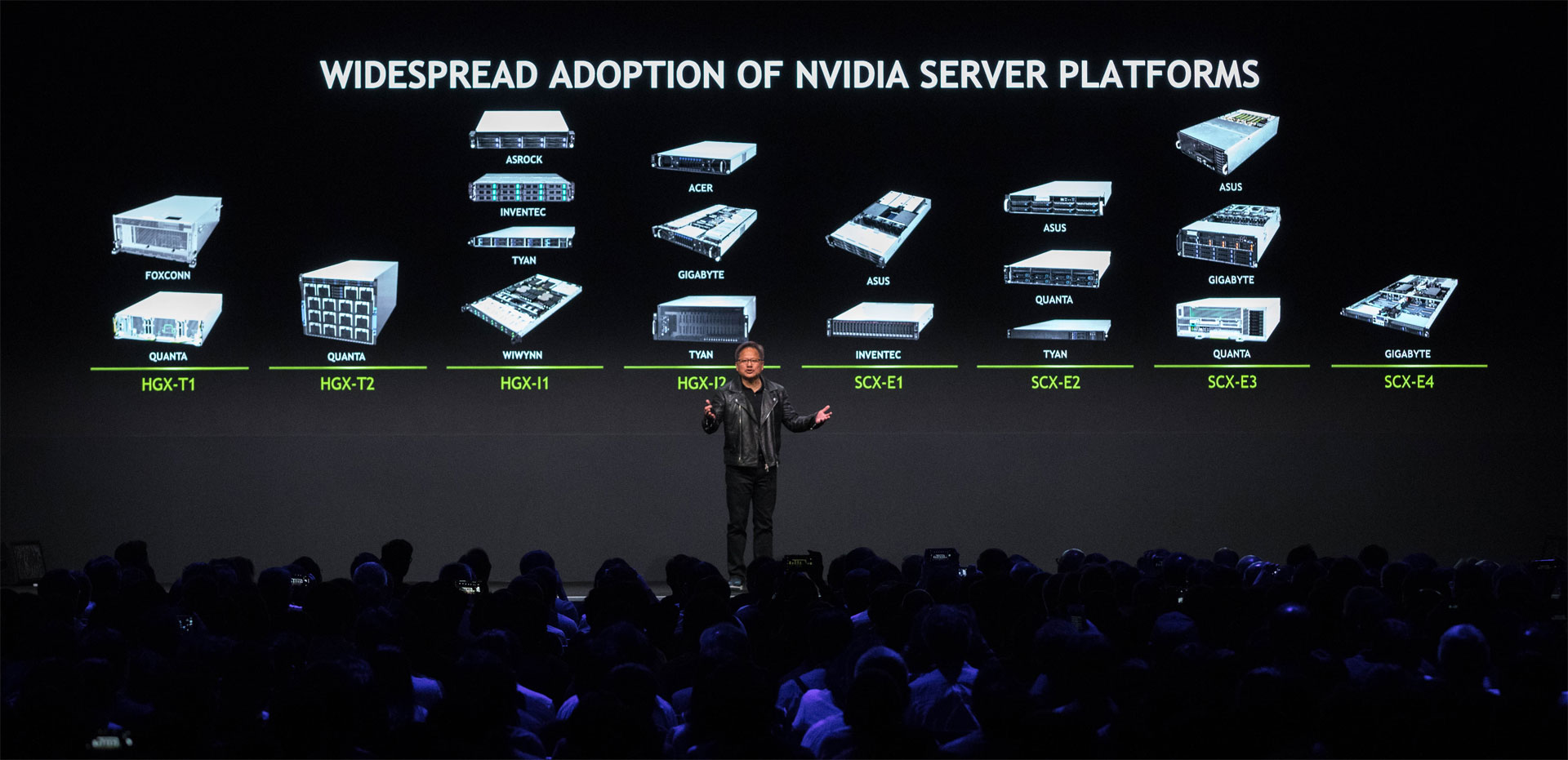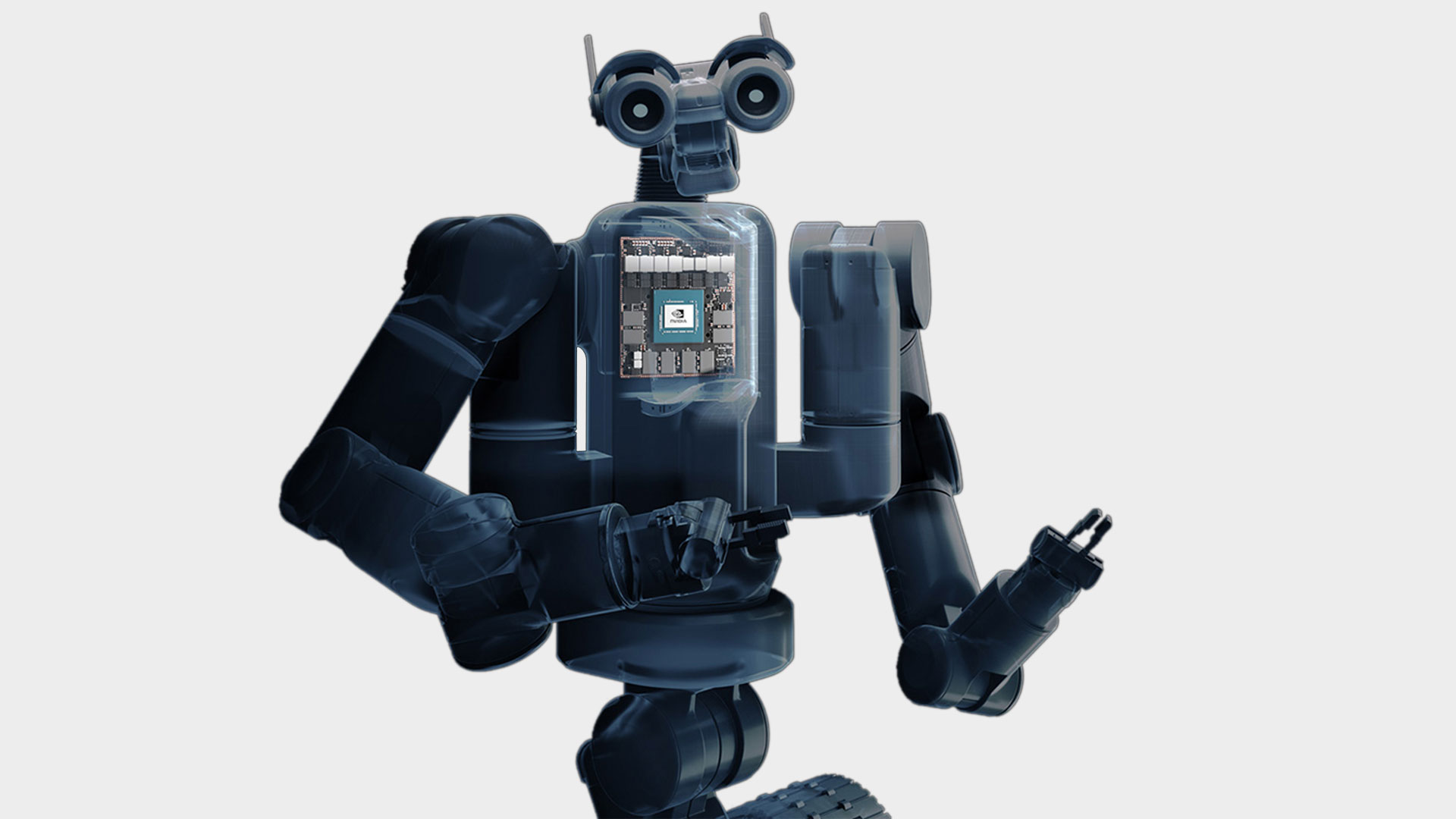Nvidia CEO says it will be 'a long time' before next-gen GeForce GPUs
The only GeForce graphics card news from the Computex keynote was a veiled "no comment."

Computex kicked off today in Taiwan, with Nvidia CEO Jensen Huang providing the keynote for the show. Don't get your hopes up for any major reveals of upcoming graphics hardware, however, as Computex has never been the show for Nvidia to announce that type of stuff. Instead, Jensen handed out green sandwiches to press waiting in line for the event to start, and discussed the company's diverse portfolio including GeForce, AI, self-driving cars, and robotics. When asked when the next-gen GeForce would arrive, Jensen quipped, "It will be a long time from now. I'll invite you, and there will be lunch. "
That was it for discussions of the future Turing graphics cards, but that's hardly a surprise. Nvidia doesn't announce new GPUs months in advance—it will tell us when it's ready to launch. Indications from other sources, including graphics card manufacturers, point to Turing GPUs arriving in late July at the earliest, with August/September for lower tier cards and custom designs. This statement by Jensen hasn't changed those dates, though it does call into question his definition of "a long time." The remainder of the keynote presentation was a rehash of what Nvidia showed at GTC and GTX Taiwan.
Nvidia has seen a lot of interest in thin and light gaming notebooks, going from eight Max-Q notebooks to 26 this year. GeForce and PC gaming has also seen tremendous growth thanks to battle royale games like PUBG and Fortnite. Three times as many people are buying GTX-class GPUs today compared to five years ago, or more specifically, 50 percent of Nvidia GeForce GPU sales are now GTX class, where in 2013 it was only 17 percent of sales. It's worth pointing out that non-GTX products are almost entirely gone these days—GT 1030 is the sole offering in that category, where in 2013 many laptops shipped with GT 755M and lower GPUs, and desktops had GT 740 and 730 as relatively popular options.

That was it for GeForce, and then Jensen spent some time talking about deep learning and AI, with applications like self-driving cars. The DGX-2 server was already shown at GTC, with 16 Tesla GV100 GPUs each with 32GB of HBM2. Nvidia is now calling it the HGX-2, and using the Tensor Cores, the HGX-2 can provide a peak 2 PFLOPS of compute in a single sever. Thanks to NVSwitch (300GB/s connections for each GPU), these GPUs can function as a single large GPU working on one model. The HGX-2 also weighs in at 350 pounds with a 10kW power supply.
That's not appropriate for every market, and Nvidia has many new options for servers, depending on the computing model. All the servers use dual Xeon CPUs. The HGX-T2 is the full HGX-2 from before, with 16 V100 GPUs connected with NVLink and NVSwitch. HGX-T1 drops half the GPUs and NVSwitch, with dual Xeon CPUs and eight V100 GPUs connected via NVLink. The HGX-I2 drops NVLink interfaces and goes with PCIe, still with eight GPUs (though these are last-gen Pascal P4 parts), and HGX-I1 uses four PCIe P4 GPUs. Then the last four options are the SCX-E3 (eight PCIe V100 GPUs), SCX-E4 (four NVLink V100), SCX-E2 (four PCIe V100), and SCX-E1 (two PCIe V100).

Other items discussed include RTX—real-time ray tracing running on four Volta GPUs. Nvidia also showed Xavier, a fully integrated "intelligent machine processor" that packs eight ARM64 CPU cores and a Volta-based graphics/Tensor processor. This consists of 512 CUDA cores, capable of up to 1.3 TFLOPS of performance (presumably FP16), with the Tensor DLA (Deep Learning Architecture) providing up to 5 TFLOPS of FP16, or 10 TOP of INT8 performance.
Xavier is the most complex SOC ever, weighing in at 9 billion transistors with a 30W TDP. Nvidia has a $1,299 devkit for Xavier, with 'early access' hardware shipping in August. Xavier and the Jetson Xavier kit will be at the heart of at least two platforms.
Keep up to date with the most important stories and the best deals, as picked by the PC Gamer team.
First, the Drive Pegasus will pack two Xavier chips with two Volta GPUs. This is the successor to the Drive PX2, which had up to two Tegra X2 SOCs with two Pascal GPUs. It's a 500W part, double the power of the PX2 AutoChauffeur, but Nvidia hasn't revealed the full specs of the Volta (or post-Volta) GPUs that will be used—only that the first-gen part will use Volta GPUs and a second-gen part will use post-Volta GPUs. Second, Xavier will be used with the Isaac IMX (Intelligent Machine Acceleration) robotics platform. Nvidia has talked about training AI robots in a virtual environment, and Isaac IMX will allow these designs to move into the real world.

That was it for the keynote, so if you want the quick summary, the only real new announcement is Isaac IMX. And that the next GeForce cards won't be here for "a long time." During the Q&A session at the end, someone asked about Volta coming to gaming, and the answer was similar. Jensen said that many gamers were deprived of GeForce graphics cards due to mining, and that the GTX 1080 and 1080 Ti are the best graphics cards right now. Also, "we suggest they buy GeForce ASAP." That should help clear inventory in advance of the Turing launch in a couple months.
Jarred's love of computers dates back to the dark ages when his dad brought home a DOS 2.3 PC and he left his C-64 behind. He eventually built his first custom PC in 1990 with a 286 12MHz, only to discover it was already woefully outdated when Wing Commander was released a few months later. He holds a BS in Computer Science from Brigham Young University and has been working as a tech journalist since 2004, writing for AnandTech, Maximum PC, and PC Gamer. From the first S3 Virge '3D decelerators' to today's GPUs, Jarred keeps up with all the latest graphics trends and is the one to ask about game performance.


